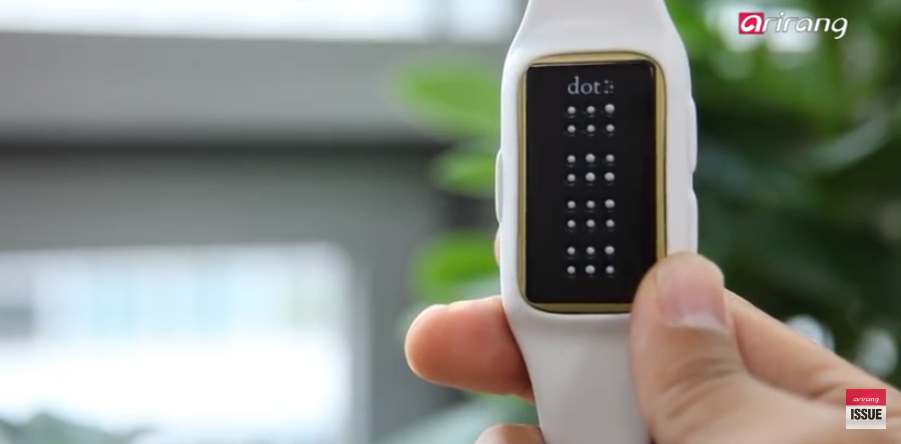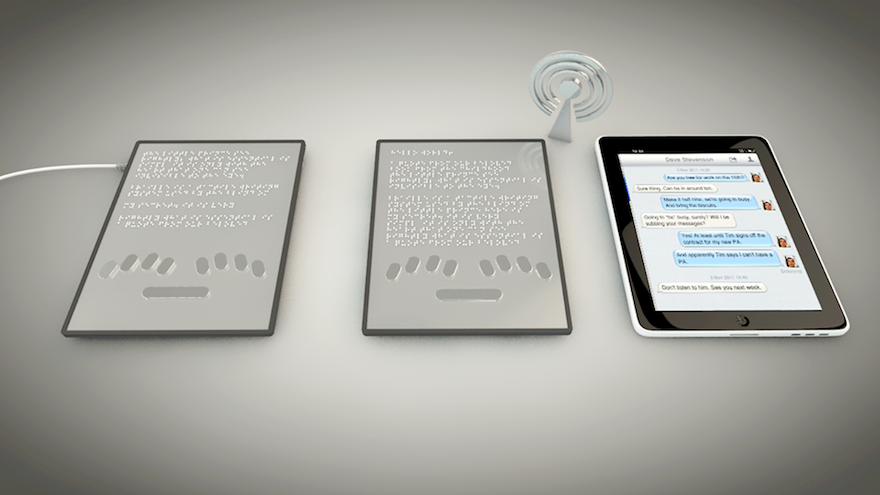Wearable Technology for Low Vision: A Game-Changer in Accessibility
Wearable Technology for Low Vision: A Game-Changer in Accessibility
Blog Article
Empowering Self-reliance With Assistive Technology for the Blind
The integration of assistive modern technology right into the lives of people with aesthetic disabilities represents a substantial improvement in promoting self-reliance and self-sufficiency. From cutting-edge display readers to sophisticated smart walking canes, these devices not just boost daily navigation and interaction however likewise empower individuals to engage meaningfully in different facets of life. As we check out the myriad benefits and real-world applications of these technologies, it comes to be crucial to examine the underlying aspects that contribute to their efficiency and the potential for future advancements in this crucial field.
Overview of Assistive Innovation
The advancement of assistive technology is based in concepts of inclusivity and empowerment. Developments in software, equipment, and sensory enhancements supply users with choices tailored to their details requirements. From display visitors that convert text to speech, to responsive devices that communicate details via touch, these tools change the method individuals engage with their surroundings.
Along with sensible applications, assistive innovation promotes better social inclusion and involvement in various sectors, including education and work (OCR devices for the blind). As r & d proceed to develop, the capacity for assistive technology to additionally boost the lives of visually impaired individuals stays appealing, leading the way for a more fair society where everyone can thrive
Kinds Of Assistive Instruments
A selection of assistive devices have actually emerged to sustain individuals with visual impairments, each created to fulfill specific requirements and boost everyday functioning. These devices range from low-tech solutions to modern developments, giving diverse choices for individuals.
Low-tech gadgets include magnifiers and large-print materials that help in reading and writing. Braille devices, such as Braille slates and stylus pens, make it possible for tactile reading and communication. Positioning and mobility aids, like white walking sticks, help users browse their environment safely.
On the greater end of the spectrum, digital magnification systems and display visitors use significant assistance. Digital magnifiers allow customers to expand message and photos on screens, while screen viewers convert electronic web content right into manufactured speech, helping with access to information on smartphones and computer systems.
Smartphone applications additionally play a crucial duty, offering functions like message recognition and navigating assistance. Wearable modern technology, such as smart glasses furnished with augmented truth, is becoming an appealing device to enhance situational recognition.
Advantages of Assistive Modern Technology
The assimilation of assistive modern technology considerably enhances the high quality of life for individuals with aesthetic problems. These innovations encourage users by promoting independence, allowing them to navigate their atmospheres better and carry out day-to-day tasks with better simplicity. Display viewers and zoom software program enable individuals to gain access to electronic info, fostering expert and instructional chances that might have previously been out of reach.
Moreover, assistive gadgets such as clever walking sticks and general practitioners applications supply real-time navigation support, boosting mobility and safety and security. This enhanced freedom not just boosts self-confidence but sites likewise motivates social involvement, enabling customers to take part even more totally in their communities.
Assistive technology likewise assists in communication, aiding users get in touch with others with voice acknowledgment and text-to-speech applications. This capacity is vital for visit this site keeping connections and accessing essential info.
Furthermore, the modification choices readily available with many assistive modern technologies guarantee that customers can customize tools to their certain needs, better boosting functionality and efficiency. On the whole, the advantages of assistive innovation for individuals with visual impairments are profound, promoting a more comprehensive society where every person can pursue their objectives and desires.
Situation Research Studies and Success Stories
Highlighting the transformative effect of assistive technology, various study highlight exactly how people with aesthetic disabilities have actually efficiently incorporated these devices into their every day lives. One engaging instance involves an university pupil who made use of screen reading software program to browse online sources and scholastic materials successfully. This innovation not only facilitated her education and learning but additionally enhanced her self-confidence in taking part in discussions and group jobs.
Another case research study features an expert who uses a smart device application created for navigating and object recognition. By utilizing this application, he has actually regained autonomy in both his personal and workplace, allowing him to commute individually and engage with colleagues much more successfully.
Additionally, a basics retired person shared her experience with braille e-readers, which allowed her to access a huge range of literary works and stay gotten in touch with her neighborhood through book clubs.
These success stories underscore the critical function of assistive innovation in fostering independence, boosting high quality of life, and promoting social integration for individuals with aesthetic problems (Assistive technology for the blind). By embracing these cutting-edge devices, customers can get over challenges and confiscate chances that add to their professional and individual gratification

Future Fads in Assistive Modern Technology
Advancement in assistive innovation is positioned to redefine the landscape of support for individuals with aesthetic disabilities. Arising trends highlight the combination of expert system (AI) and artificial intelligence, which improve the performance of tools that aid with navigating and info accessibility. AI-driven applications are currently capable of analyzing visual information in real-time, allowing users to involve with their environment a lot more independently.
In addition, the development of wearable innovation is advancing swiftly. Smart glasses furnished with augmented reality (AR) can offer audio summaries of environments, changing just how customers communicate with public spaces. These gadgets not just advertise freedom but also foster social inclusion.
Furthermore, the Web of Points (IoT) is making homes smarter, enabling seamless connection between assistive gadgets and everyday appliances. This connectivity equips users by enabling voice-activated controls and computerized responses tailored to specific requirements.
Conclusion
Finally, assistive technology plays a pivotal role in empowering people with visual impairments by boosting their independence and engagement with their surroundings. The diverse variety of applications and gadgets available not just facilitates navigating and interaction but additionally promotes social combination and chances for expert and personal growth. As advancements continue in this field, the potential for enhancing the quality of life for those with visual problems will certainly increase, fostering greater autonomy and empowerment.

Report this page